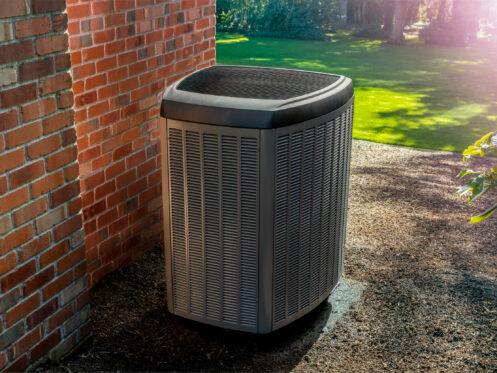Most homeowners are shocked to learn that a heat pump can deliver up to three times more heat energy than the electricity it consumes. Yet when the crisp fall nights arrive, many may notice their systems struggling.
As temperatures fluctuate from warm afternoons to chilly mornings, heat pumps encounter challenges specific to the fall season. Frequent system cycling, unexpected energy spikes, and uneven comfort are all signs that your system is not working as efficiently.
Understanding how your heat pump responds to seasonal changes can prevent wasted energy and rising bills. This guide explains the science behind efficiency, the factors that determine performance, and the practical steps you can take for better comfort this fall.
How Heat Pumps Work and Why Fall Is Different
Heat pumps work by moving warmth instead of creating it. They do not burn fuel like gas furnaces. Heat pumps consist of an outdoor unit with a compressor and coil, as well as an indoor unit with a coil and air handler.
Efficiency Measures
There are two efficiency measurements for heat pumps: COP and HSPF. COP stands for Coefficient of Performance, and HSPF stands for Heating Seasonal Performance Factor.
COP shows the measurement of heat produced per unit of energy. HSPF reflects the overall system performance. Both of these metrics highlight why heat pumps can remain efficient even when temperatures drop. However, fall temperatures can temporarily reduce performance in some heat pumps.
Operational Conditions
Fall brings unique operational conditions. Mild daytime temperatures allow the system to heat efficiently without frequent backup heat. Cooler nights and fluctuating temperatures test the unit’s responsiveness. However, well-maintained modern heat pumps adapt to changing conditions, ensuring steady comfort and continued energy savings.
What Determines Heat Pump Efficiency in the Fall
There is no single factor that determines the efficiency of a heat pump in the fall. Instead, several things work together to ensure efficient operation.
System Sizing
A properly sized heat pump prevents short cycling, which can waste energy and lead to ineffective performance. Oversized units shut off and on too frequently, while undersized heat pumps will run constantly. Both result in higher energy costs.
When our technicians size a new system, they do more than glance at square footage. They conduct a thorough evaluation that takes into account the insulation quality of your home. They also evaluate the location of the windows and the way the floor plan directs airflow from room to room. Getting these details right prevents the use of oversized or undersized equipment, both of which can waste energy.
Refrigerant Charge and Airflow
Efficiency depends on correct refrigerant levels and clear airflow, which let your system move heat properly. Dirty filters or blocked ducts make the system work harder. Changing filters regularly and keeping coils and ducts clean helps maintain strong performance.
Defrost Cycles
Defrost cycles are a crucial component of heat pump operation. They protect the coils from freezing. Modern heat pumps handle these cycles automatically, helping to reduce energy consumption while maintaining a consistent temperature.
When frost accumulates on the coil, the system temporarily reverses to melt ice. It then quickly resumes efficient operation.
Thermostat Behavior
The thermostat can also impact efficiency. Significant temperature fluctuations trigger the backup heat to come on unnecessarily.
Programmable thermostats help strike a balance between comfort and energy usage. Gradual adjustments keep the heat pump running efficiently without wasting power.
Outdoor Conditions
Outdoor conditions can vary considerably during the fall. Conditions such as humidity, wind, and exposure to sunlight impact system efficiency. Units installed to ensure proper airflow and sun exposure will perform best.
Maintenance Practices
Maintenance also makes a difference. Homes with clean filters, maintained coils, and sealed ducts enable heat pumps to deliver better efficiency during the changing fall weather.
Common Ways Homeowners Reduce Efficiency
Small daily habits can make your heat pump work harder without you even noticing. Ignoring professional tune-ups or letting minor issues go unaddressed can also hurt performance. Here are a few ways efficiency can drop around your home:
- Ignoring dirty air filters
- Covering or blocking vents
- Skipping fall tune-ups and coil cleaning
- Overusing the thermostat
- Allowing debris to build up around the outdoor unit
Don’t Skip Professional Maintenance
Even if you keep up with DIY maintenance, you need professional heating service. Skipping seasonal maintenance is one of the fastest ways to reduce efficiency. Our skilled technicians check things that most people cannot see or measure. These details make the difference between a smooth-running system and one that wastes too much energy.
Professional maintenance visits involve a multi-step process that checks every area of your indoor and outdoor components. Our professionals will perform the following:
- Inspect refrigerant levels
- Test defrost controls
- Clean and adjust coils
- Tighten electrical connections
- Calibrate backup heat
- Clean filters and vents
Neglecting these vital checks forces the heat pump to work harder than it should. That leads to longer run times, higher bills, and a greater chance of a mid-season breakdown.
A yearly maintenance appointment is far less costly than repairing a failed compressor or having to replace it prematurely. Professional maintenance protects your investment, improves efficiency, and ensures the system delivers steady comfort all fall.
Pay Attention to Ductwork Efficiency
A heat pump can only perform as well as the duct system that delivers the conditioned air. Leaky, undersized, or poorly insulated ducts waste a surprising amount of energy. Waste most frequently occurs in attics, crawl spaces, and basements. That wasted energy not only reduces efficiency but also leaves rooms unevenly heated.
Signs of duct issues include rooms that never seem to be comfortable, high dust levels, and whistling noises. According to the US Department of Energy, you can lose 20% to 30% of heated air through duct leaks.
Professional duct cleaning identifies leaks and weak spots that you may not be able to see. Sealing gaps and restoring insulation allows the heat pump to deliver air more efficiently.
Addressing duct performance helps homeowners ensure their heat pump systems operate efficiently. The result is consistent fall comfort, lower utility costs, and less strain on equipment.
Integrating Heat Pumps With Other Systems
Some homes use hybrid setups where a heat pump pairs with a furnace. These dual-fuel systems maximize efficiency by relying on the heat pump during moderate fall weather and switching to the furnace only when temperatures drop too low. Understanding how to program and control these systems prevents wasted energy and keeps heating costs predictable.
Keep Your Heat Pump Running at Peak Efficiency This Fall
A heat pump delivers reliable comfort when it operates at maximum efficiency. However, that only happens when homeowners pay attention to the details. It’s essential to maintain clean filters, balanced airflow, sealed ducts, and seasonal tune-ups.
Instead of letting minor issues slowly reduce efficiency, take steps now to protect your system. When you schedule professional service with DeWolfe Plumbing, Heating & Cooling, you gain expert care that keeps your heat pump in sound condition. There’s no reason to pay more than necessary when heating your home with a heat pump this fall. Protecting your efficiency is a key way to combat high electricity costs.
DeWolfe Plumbing, Heating & Cooling installs, maintains, and repairs all heat pumps. We also provide ductwork services. We are a fourth-generation company with over 90 years in the business. Contact DeWolfe Plumbing, Heating & Cooling today to schedule heat pump services in West Boylston.


